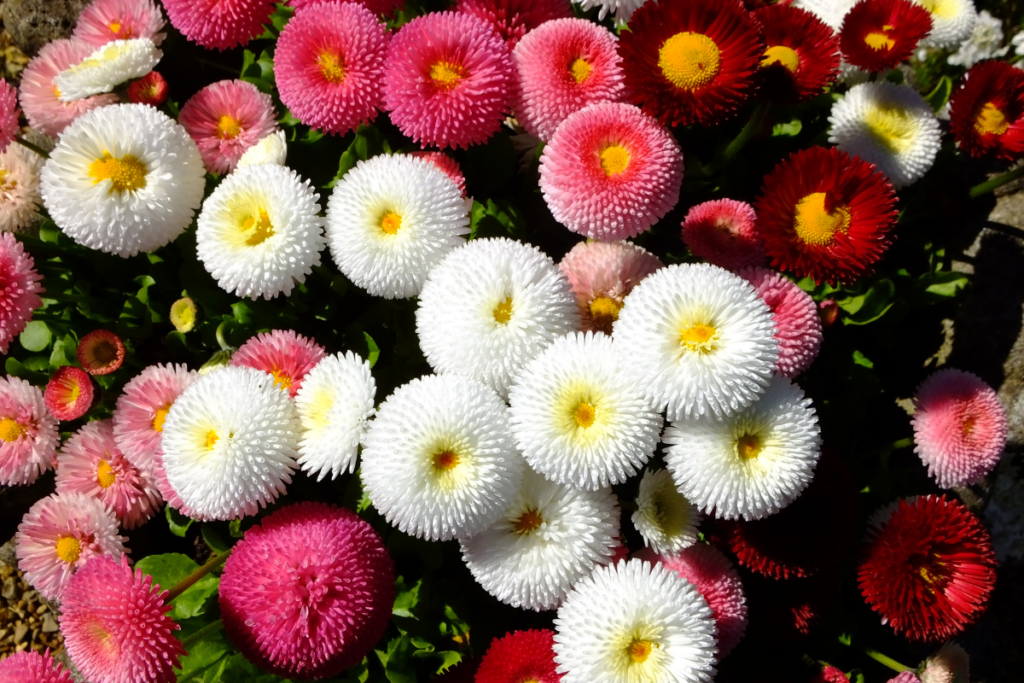Gardening enthusiasts know the joy of cultivating vibrant gardens bathed in sunlight. Sun-loving perennials, which thrive in full sunlight, offer an array of colors, textures, and forms to create visually stunning landscapes. These plants not only provide beauty but also ensure a low-maintenance garden that returns year after year. This article explores various sun-loving perennials, their characteristics, and how to care for them to maximize their potential.
Benefits of Sun-Loving Perennials
Longevity and Low Maintenance
Perennials, unlike annuals, come back every year, which means gardeners can enjoy their beauty with minimal effort. Once established, these plants require less water, fertilization, and overall care, making them an excellent choice for busy gardeners.
Resilience and Adaptability
Many sun-loving perennials are drought-tolerant and can thrive in poor soil conditions. Their ability to withstand harsh sunlight and varying weather conditions makes them robust and reliable additions to any garden.
Biodiversity and Wildlife Support
Sun-loving perennials attract pollinators like bees, butterflies, and hummingbirds. By planting a variety of these perennials, gardeners can support local wildlife and promote biodiversity in their gardens.
Popular Sun-Loving Perennials
1. Black-Eyed Susan (Rudbeckia hirta)

Black-Eyed Susan is a classic sun-loving perennial known for its bright yellow petals and dark brown centers. These cheerful flowers bloom from mid-summer to early fall and can reach heights of 2 to 3 feet.
Care Tips:
- Soil: Prefers well-drained soil but can tolerate clay and loam.
- Watering: Moderate; water during dry spells.
- Maintenance: Deadhead spent blooms to encourage continuous flowering.
2. Coneflower (Echinacea)

Coneflowers are hardy perennials with daisy-like flowers in shades of purple, pink, and white. They bloom from late spring to early fall and are known for their medicinal properties.
Care Tips:
- Soil: Well-drained, sandy or loamy soil.
- Watering: Drought-tolerant once established; water moderately.
- Maintenance: Deadhead to prolong blooming; divide clumps every few years.
3. Lavender (Lavandula)

Lavender is prized for its fragrant purple flowers and silver-green foliage. This perennial blooms from late spring to early summer and is often used in aromatherapy and culinary applications.
Care Tips:
- Soil: Well-drained, slightly alkaline soil.
- Watering: Low; avoid overwatering.
- Maintenance: Prune after flowering to maintain shape and promote new growth.
4. Daylily (Hemerocallis)
Daylilies are versatile perennials that come in a wide range of colors, from bright yellows and oranges to deep reds and purples. They bloom in mid-summer and are known for their ability to thrive in various conditions.
Care Tips:
- Soil: Adaptable to most soil types, prefers well-drained soil.
- Watering: Moderate; keep soil consistently moist but not waterlogged.
- Maintenance: Deadhead spent flowers and remove old foliage to encourage new growth.
5. Russian Sage (Perovskia atriplicifolia)
Russian Sage is a hardy perennial with tall spikes of lavender-blue flowers and aromatic silver foliage. It blooms from mid-summer to early fall and can grow up to 4 feet tall.
Care Tips:
- Soil: Well-drained, sandy soil.
- Watering: Low; drought-tolerant once established.
- Maintenance: Cut back in early spring to encourage bushy growth.
6. Shasta Daisy (Leucanthemum x superbum)
Shasta Daisy is a classic garden perennial with large white petals and yellow centers. These flowers bloom from early to late summer and can grow up to 3 feet tall.
Care Tips:
- Soil: Well-drained, loamy soil.
- Watering: Moderate; water regularly during dry periods.
- Maintenance: Deadhead to extend blooming period; divide clumps every few years.
7. Salvia (Salvia spp.)
Salvia, also known as sage, is a sun-loving perennial with spikes of tubular flowers in various colors, including blue, purple, red, and pink. It blooms from late spring to early fall.
Care Tips:
- Soil: Well-drained soil, tolerant of poor soil conditions.
- Watering: Moderate; drought-tolerant once established.
- Maintenance: Deadhead spent flowers to encourage reblooming; cut back in early spring.
8. Yarrow (Achillea millefolium)
Yarrow is a hardy perennial with clusters of small, flat-topped flowers in shades of white, yellow, pink, and red. It blooms from late spring to early fall and has fern-like foliage.
Care Tips:
- Soil: Well-drained soil, tolerates poor soil.
- Watering: Low; drought-tolerant once established.
- Maintenance: Deadhead to promote reblooming; divide clumps every few years.
Design Tips for Sun-Loving Perennial Gardens
Create a Color Palette
Select sun-loving perennials with complementary colors to create a cohesive look. Consider using a color wheel to choose hues that harmonize well together. For example, pairing purple coneflowers with yellow Black-Eyed Susans creates a vibrant contrast.
Vary Heights and Textures
Incorporate plants of different heights and textures to add depth and interest to your garden. Place taller plants like Russian Sage at the back, medium-height plants like Shasta Daisies in the middle, and shorter plants like Lavender at the front.
Plan for Continuous Blooming
Choose perennials with different blooming times to ensure your garden remains colorful throughout the growing season. Early bloomers like Salvia can be complemented with mid-summer bloomers like Daylilies and late bloomers like Black-Eyed Susans.
Group Plants with Similar Needs
Group sun-loving perennials with similar water and soil requirements to simplify care. This approach ensures that all plants receive the appropriate amount of water and nutrients.
Caring for Sun-Loving Perennials
Soil Preparation
Before planting, prepare the soil by adding organic matter such as compost to improve drainage and fertility. Most sun-loving perennials prefer well-drained soil, so avoid areas with poor drainage that can lead to root rot.
Watering
While many sun-loving perennials are drought-tolerant, they still need adequate water during their establishment period. Water deeply but infrequently to encourage deep root growth. Once established, most of these plants can tolerate dry conditions.
Mulching
Apply a layer of mulch around the base of your perennials to retain soil moisture, suppress weeds, and regulate soil temperature. Organic mulches like wood chips or straw are ideal choices.
Fertilizing
Sun-loving perennials generally do not require heavy fertilization. A light application of balanced, slow-release fertilizer in the spring is usually sufficient. Avoid over-fertilizing, as this can lead to excessive foliage growth at the expense of flowers.
Pruning and Deadheading
Regularly prune and deadhead your perennials to encourage new growth and prolong blooming. Remove spent flowers and trim back leggy or damaged stems. Some perennials, like Lavender, benefit from a hard prune after flowering.
Dividing
Many sun-loving perennials benefit from division every few years to prevent overcrowding and rejuvenate the plants. Divide clumps in early spring or fall, ensuring each division has several healthy shoots and roots.
Conclusion
Sun-loving perennials are a delightful addition to any garden, offering a stunning display of colors and forms while requiring minimal maintenance. By selecting the right plants and providing proper care, gardeners can create vibrant, resilient landscapes that flourish in full sunlight. Whether you prefer the classic charm of Black-Eyed Susans, the aromatic allure of Lavender, or the striking beauty of Coneflowers, there is a sun-loving perennial to suit every taste and garden style. Embrace the sunny spots in your garden and let these perennials shine, bringing joy and beauty year after year.







